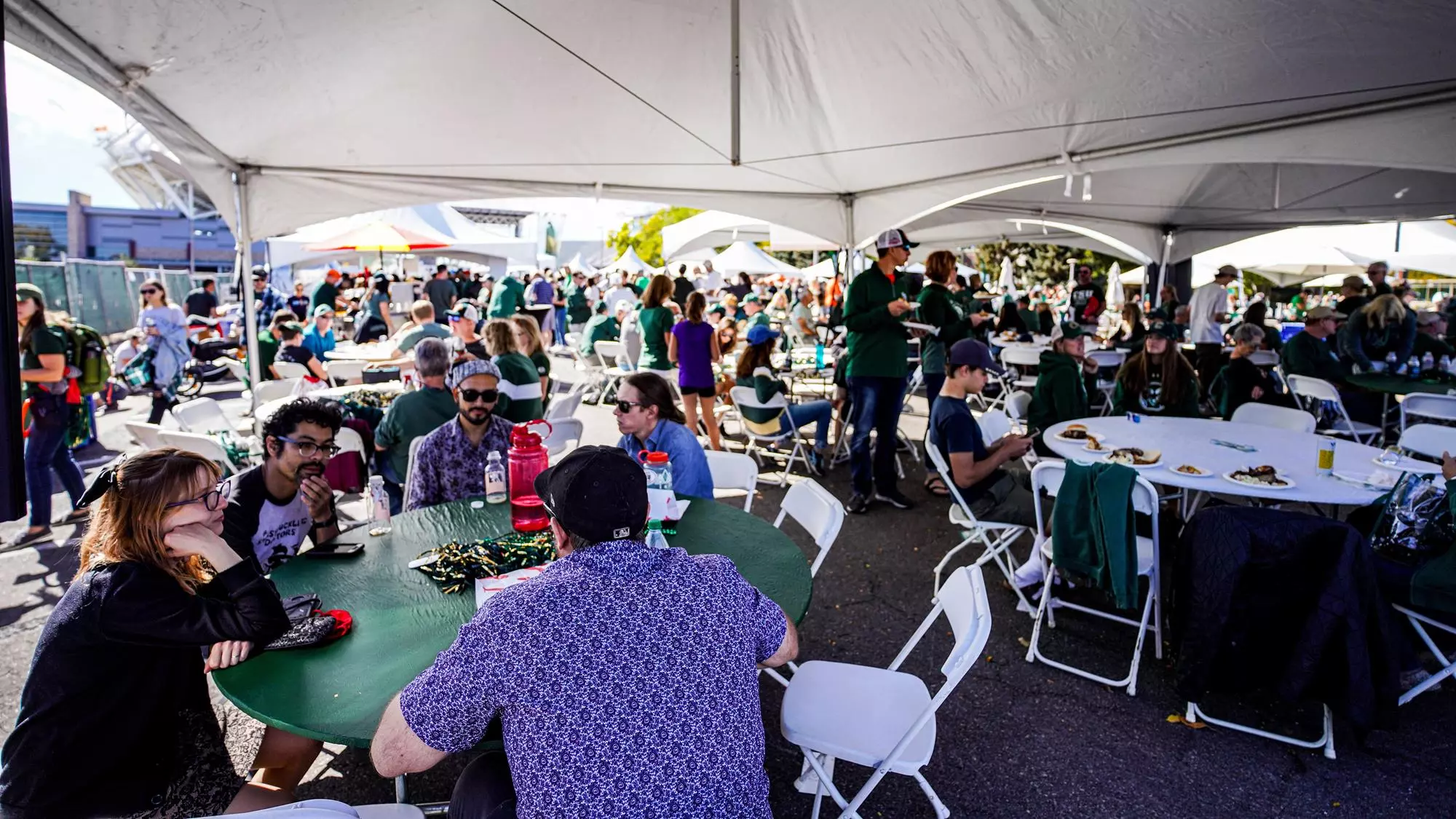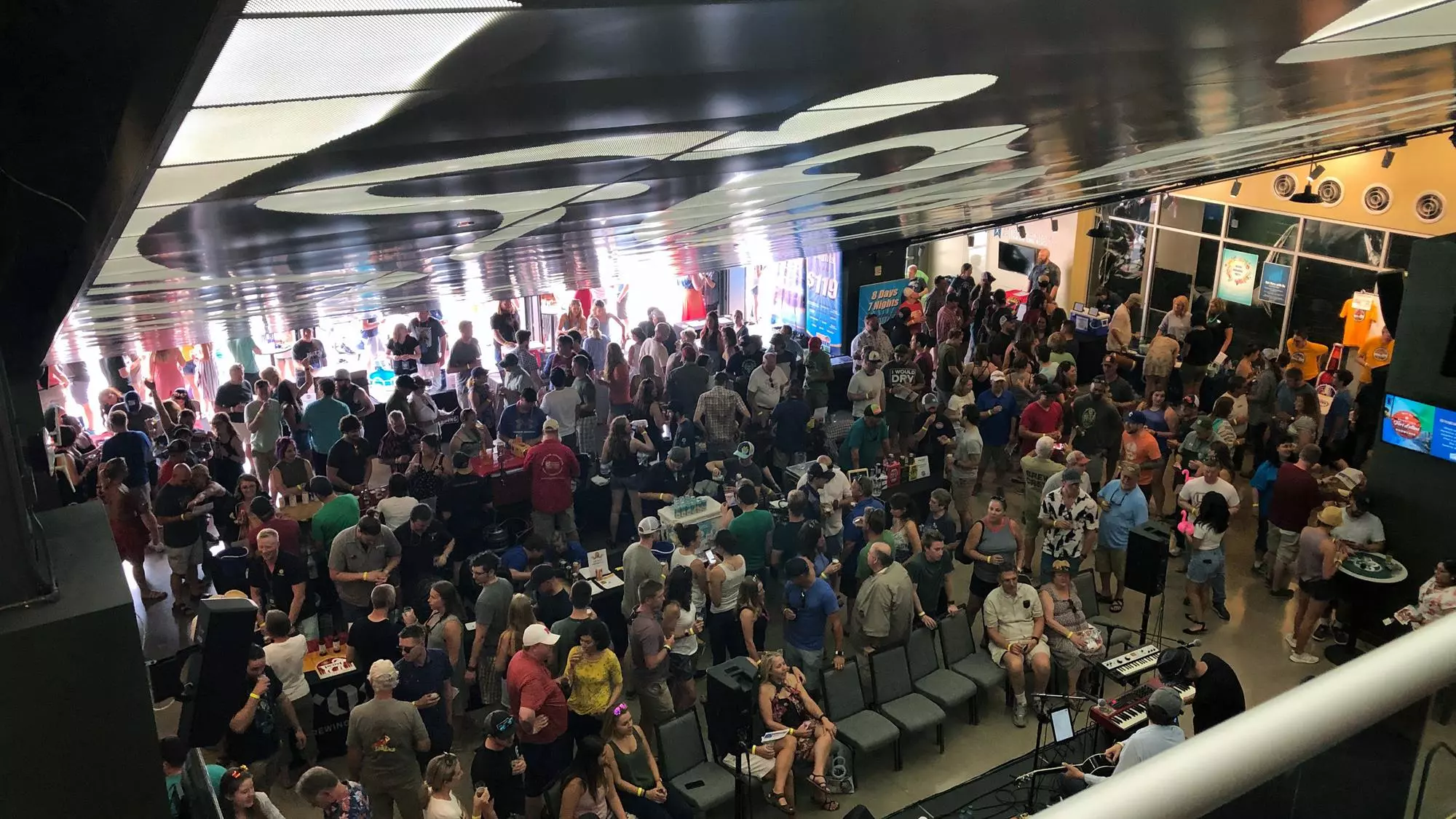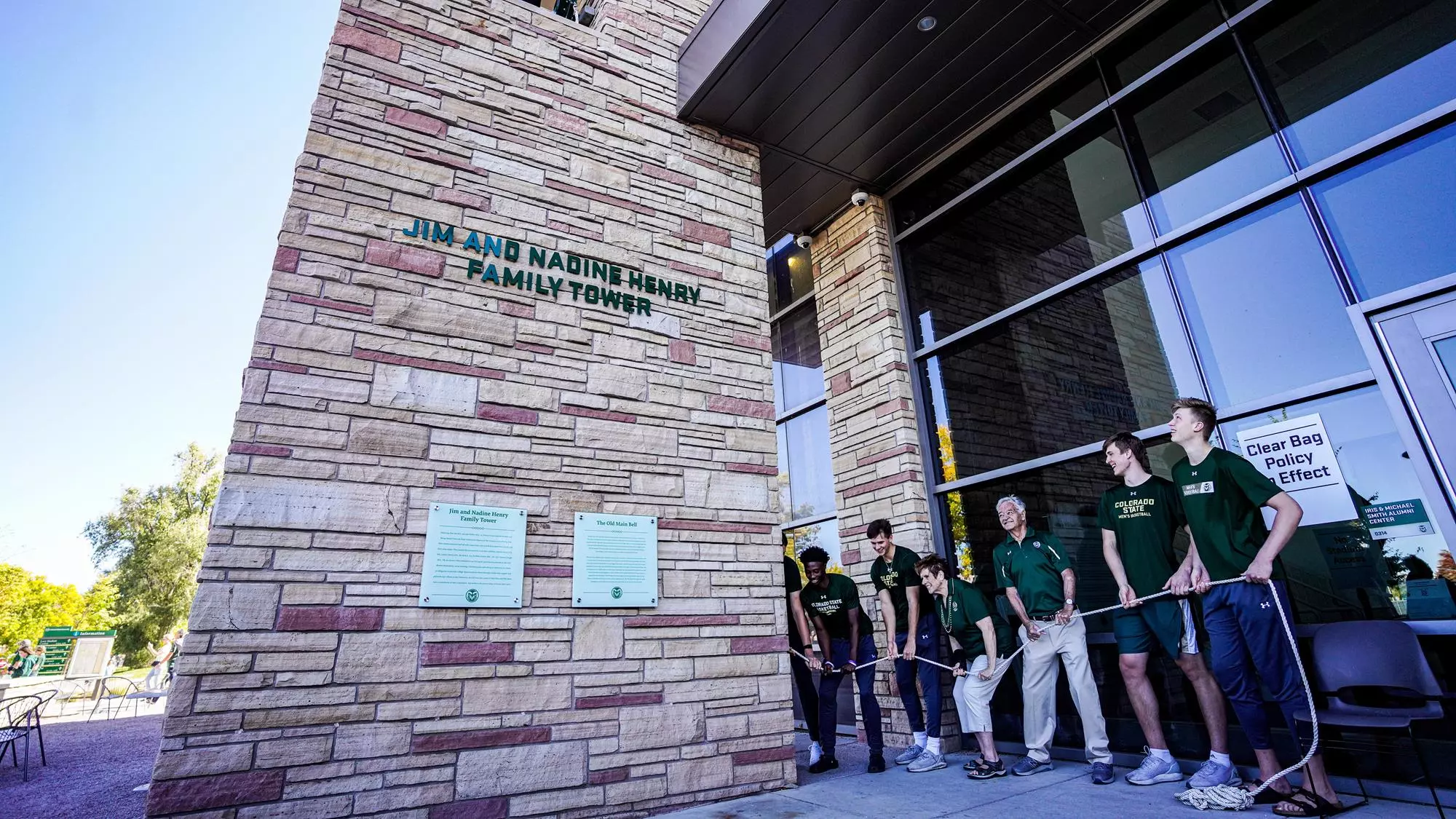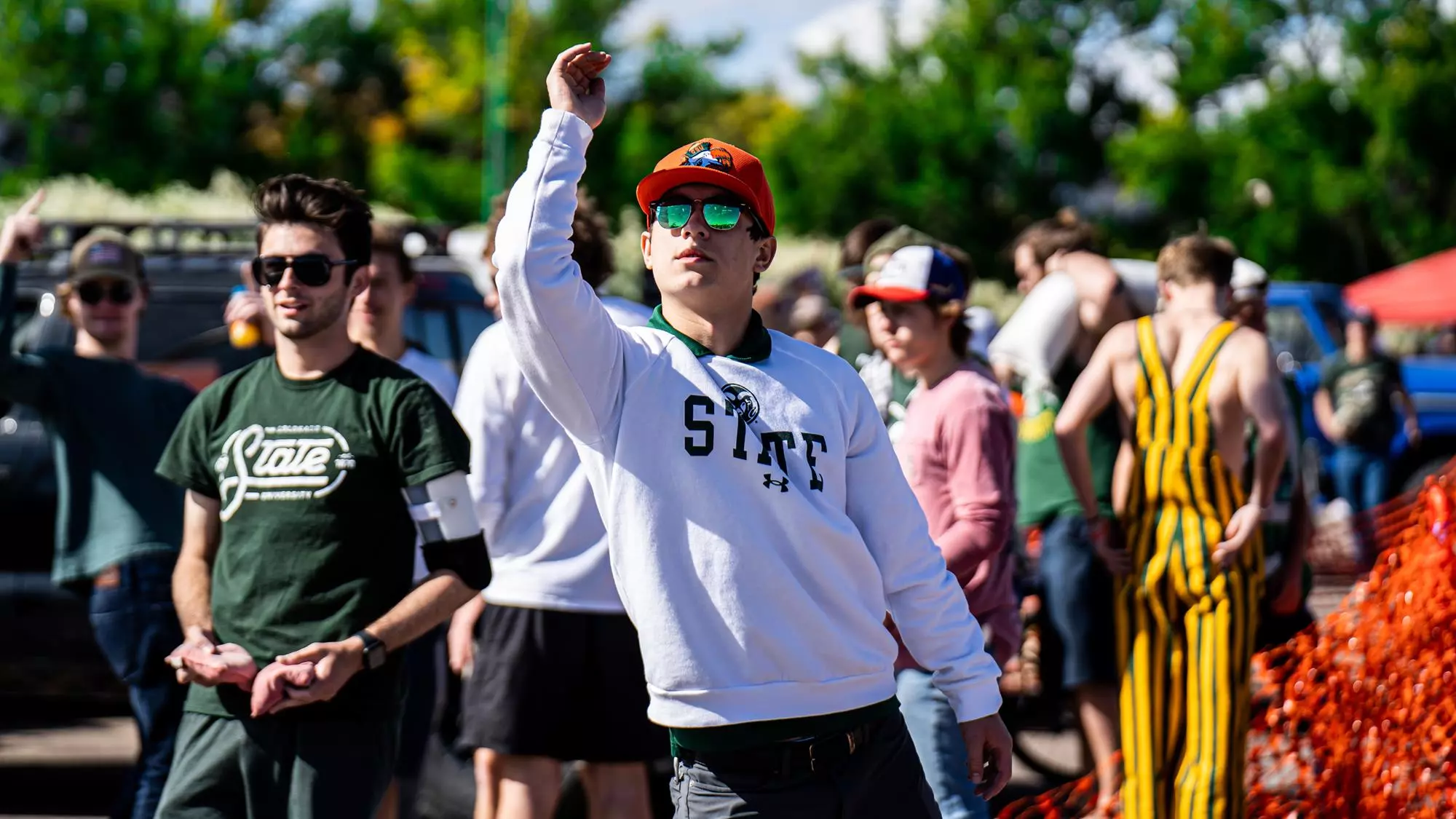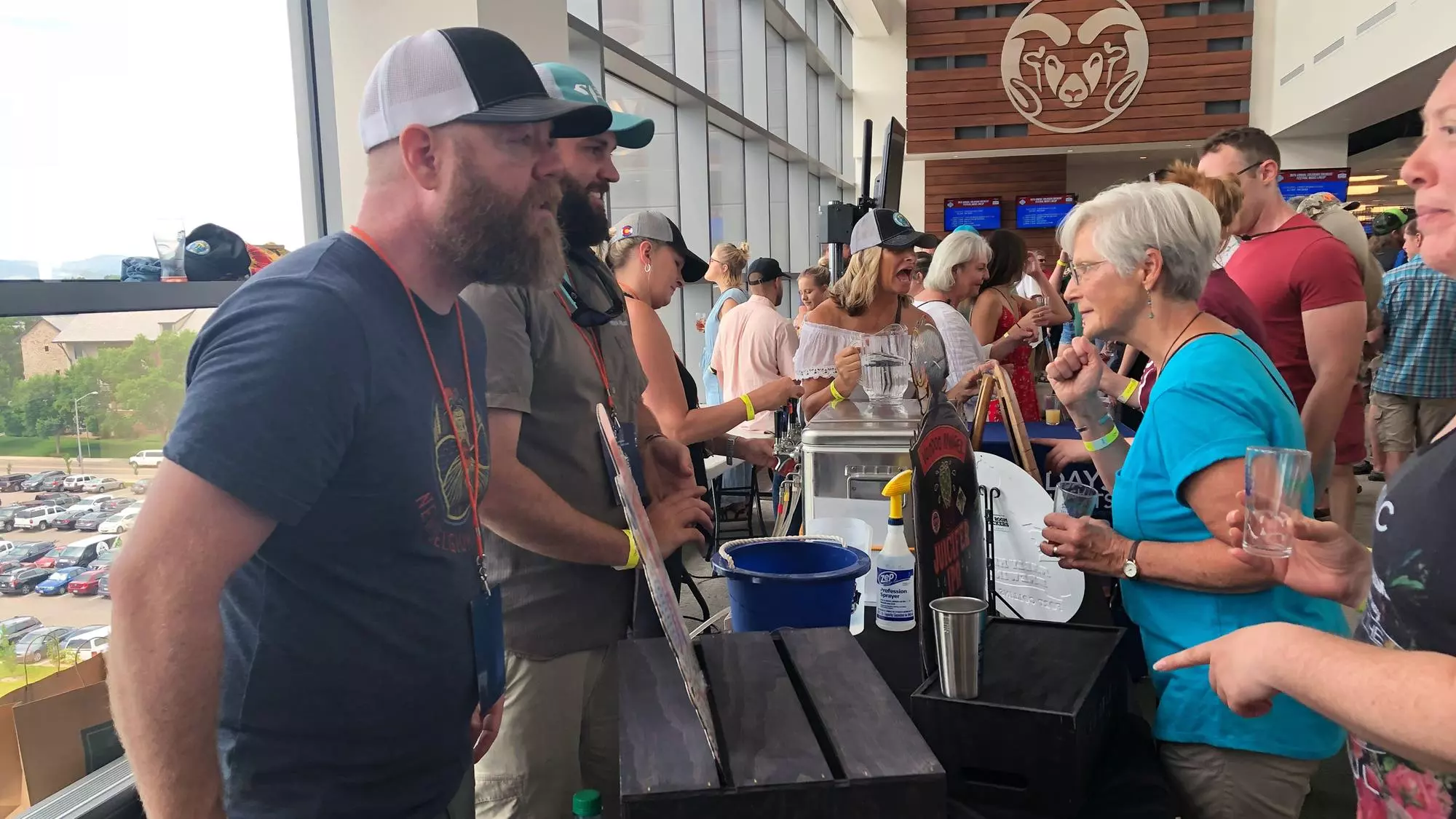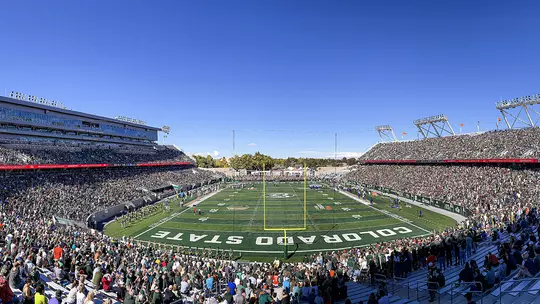
Canvas Stadium Delivers on Promises
Venue has become centerpiece of campus and surrounding community
For those who viewed the facility simply as a football venue, take another look.
Canvas Stadium, now in operation for five years, has proven to serve Colorado State University in the multitude of ways leadership promised when proposing the facility, and even a few they never envisioned.
At its basic core, Canvas Stadium is home to the football program, and on game days this year, crowds have returned post-pandemic in record numbers. Yet a football game was not the first event held at the facility, and most of the more than 600 which have taken place since construction finished have nothing to do with athletics.
As the way the north end zone of Canvas Stadium opens up to campus, the facility itself has served as a gateway for alumni and the population along the Front Range to engage with the university as a whole.
“Canvas Stadium has been extremely successful at bringing our alumni back to campus, particularly on football game days, because now when our alums come for a game they’re actually on campus,” said CSU President Joyce McConnell. “It’s a two-for-one: Catch a Rams game and enjoy the beautiful CSU campus where they went to school. And that back-to-campus effect extends throughout the year, because CSU alums are coming back to get married at Canvas Stadium and they’re choosing the stadium and the Iris and Michael Smith Alumni Center at the stadium as sites for important life-events like reunions and memorial services. And now any time our alumni come back to campus, the Smith Alumni Center offers them a special place just for them to drop in and make themselves comfortable. I know for our alumni there’s nothing like being on CSU’s campus to connect with their alma mater as a place that has had a powerful impact on their life.”
Construction of the facility came with a price tag of $220 million, which some detractors felt was an unnecessary expense for the university to undertake as a whole. What campus leadership knew at the time was having the football stadium on campus would be a major drive to have alumni return, which they rarely did when the football team played at Hughes Stadium, as it sat 4 miles west of campus.
Kelly Stouffer, who starred for the football program and was a first-round NFL Draft pick, returned to Fort Collins often to call football games as a television analyst. Still, he said he never returned to campus until his daughter started playing softball for CSU.
The refrain was a common one Director of Athletics Joe Parker heard his first two years on the job – people were going to football games, some for decades, without ever visiting campus.
“That’s been the one consistent thing -- we’re bringing people back to the university. They’re seeing the university, they’re experiencing the university when they’re on campus for a game day,” Parker said. “One of the other positives has just been the robust experience the stadium provides for events which are hosted in the building on non-game days. We’ve by far exceeded expectations of engaging people in the community with the special events at Canvas Stadium. That’s certainly a way the stadium serves the purpose of the university’s primary engagement asset.”
Parker knows they’re also noticing Canvas Stadium isn’t the only new construction on campus, either, which helps tell the story of a university which is expanding the educational mission for the student body as a whole and helping attract the next wave of students to campus.
You want it to be a place -- and it has been-- you don’t want to be anywhere else on a football Saturday or a football Friday. It’s an event, it’s a happening. It’s Colorado State.”Steve Addazio
To Educate, Engage and Excel are the three driving principles of the CSU athletic department, and Canvas Stadium has touched all three. The east side of the building is home to the Alumni Center, but also classrooms. The facility itself has received rave reviews for the architecture and the way it blends in with other building on campus and the game-day experience it proves. It has helped spur other non-university construction near campus. It is also LEED Silver certified a mark of distinction for ecologically sustainable venues.
But the biggest benefit of the stadium comes with engagement, particularly with the surrounding community.
While Colorado State has been a pillar of Fort Collins for more than a century, many people who live in the city never had a reason to come to campus. With Canvas Stadium, they’re not only arriving for the first time, but they have told Abbey Tuhkanen, the Director of Stadium Events, they keep coming back.
“We do events here for non-profits, the Northern Colorado community and even some down in Denver. There are groups from Denver who have started to come up and are hosting their events at Canvas Stadium, so it’s not just impacting Fort Collins, it’s impacting the Front Range,” she said. “We host all of Poudre School District’s proms here, and we engage the Colorado State community, too. A lot of our campus partners want to hold their events here.
“I think we’ve only just scratched the surface on our impact. As we continue to grow and host larger events, the footprint will only get bigger. There are a lot of ties to CSU, people who want to come here and host events, but there are people who are just looking for a new venue. They’ve seen our pictures online, and they decide they want to host here. There are people coming to campus who have never been here before. It’s growing, and we’re seeing a lot more bigger events. This is more than just a football stadium.”
The original agreement with the city and the surrounding neighborhoods was to limit the size of non-Colorado State events for a series of years, with a phased in approach to larger events, according to Deputy Director of Athletics, Steve Cottingham. Canvas Stadium has reached that point, and now the university is looking at holding larger events, with talks already in place for one this summer which has traditionally been held at Empower Field in Denver.
The financial plan presented to the Board of Governors for approval showed projections the project would help pay for itself, which it has done, even after a year where a global pandemic kept fans outside the gates.
“As we prepared the financial model to build the stadium, we were able to demonstrate that the additional revenues generated by the campus stadium compared to what we’d been doing at Hughes would be sufficient to operate the stadium and service the bonds that were used to construct it, and that’s been the case,” Cottingham said. “Every year since the stadium has been opened, we’ve reported in August to the Board of Governors meeting and shown in a separate financial statement how the financial plan has worked. We’ve outperformed the financial model and serviced the bond as we said we would do.
“The plan always contemplated that as the bond payments went up to $12 million (after three years) and plateaued there, revenues would climb over time and that we would use some of the capital campaign contributions around the stadium and some of the reserves. To date, we have not had to dip in at all to the stadium capital campaign reserves, and that serves as a substantial backstop to the debt payments. We did this past year, consistent with what had been forecast in the plan, use part of the extra $3 million that had been generated in the first year of the stadium operation to sort of round things off, but that’s in a COVID year that we had to do that, and half of that still remains.”
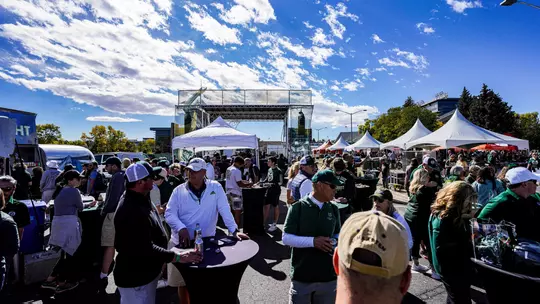
As for the main tenants of the building, head coach Steve Addazio says he knows he works in a facility which proves the commitment the university has made to not just his team, but athletics as a whole.
Football games provide a centerpiece for a campus on game days, and with crowds exceeding 30,000 in two of three games this season, Addazio believes memories are being created, and not just for his players.
Tailgating has thrived in the new setting, and the pre-game Ram Walk has come with a renewed energy.
“We are proud of this facility. I have friends who come out here and are like, what the heck? This is better than some of the Power 5 stadiums,” Addazio said. “It’s a beautiful setting, a beautiful facility and it helps you in recruiting and marketing your program. It shows the commitment to the program. This is a big step.
“The student body has been unbelievable. The student section here and their cheering and energy and the atmosphere ... You want it to be a place -- and it has been-- you don’t want to be anywhere else on a football Saturday or a football Friday. It’s an event, it’s a happening. It’s Colorado State.”
Those types of crowds were a concern for the surrounding neighborhoods, and Colorado State wanted to be a neighbor in good standing, so it worked with the Fort Collins Police Department to devise a traffic plan which produced a steady flow, especially on the major city arteries of Prospect Road and College Avenue.
Lt. Mike Trombley said they work especially hard when there is a weeknight game, particularly one pared with rush hour after work, but he said the department has received minimal interaction from the community in regards to complaints.
“While we expected to see significant impacts -- and in the first year, we certainly worked through some things -- overall the traffic impact around the stadium are negligible, just because of all the different ways you can get into it,” Trombley said. “We don’t have any serious concerns about traffic impacts on game days.”
The only impacts Colorado State has seen, which they pictured, have been positive. Football games will run from September through November. But the other months of the year bring conferences and seminars to campus. Weddings, anniversaries, proms and continuations.
The Fortitude, a major road race for runners, has brought a wave of people to campus, as did the Colorado Brewer’s Festival. As hoped, Canvas Stadium has provided a centerpiece for the university, as well as the Northern Colorado community as a whole.
“It’s been so rewarding to see Canvas Stadium truly become a year-round hub for the Fort Collins community,” McConnell said. “Canvas Stadium has become a popular place for local businesses to host off-site meetings; non-profits are hosting events at the stadium; it’s a tour stop for people visiting campus; people are holding weddings there . . .and the list goes on. CSU is a primary employer and economic driver in Northern Colorado, and Canvas Stadium has become an important place for our community to gather.”

